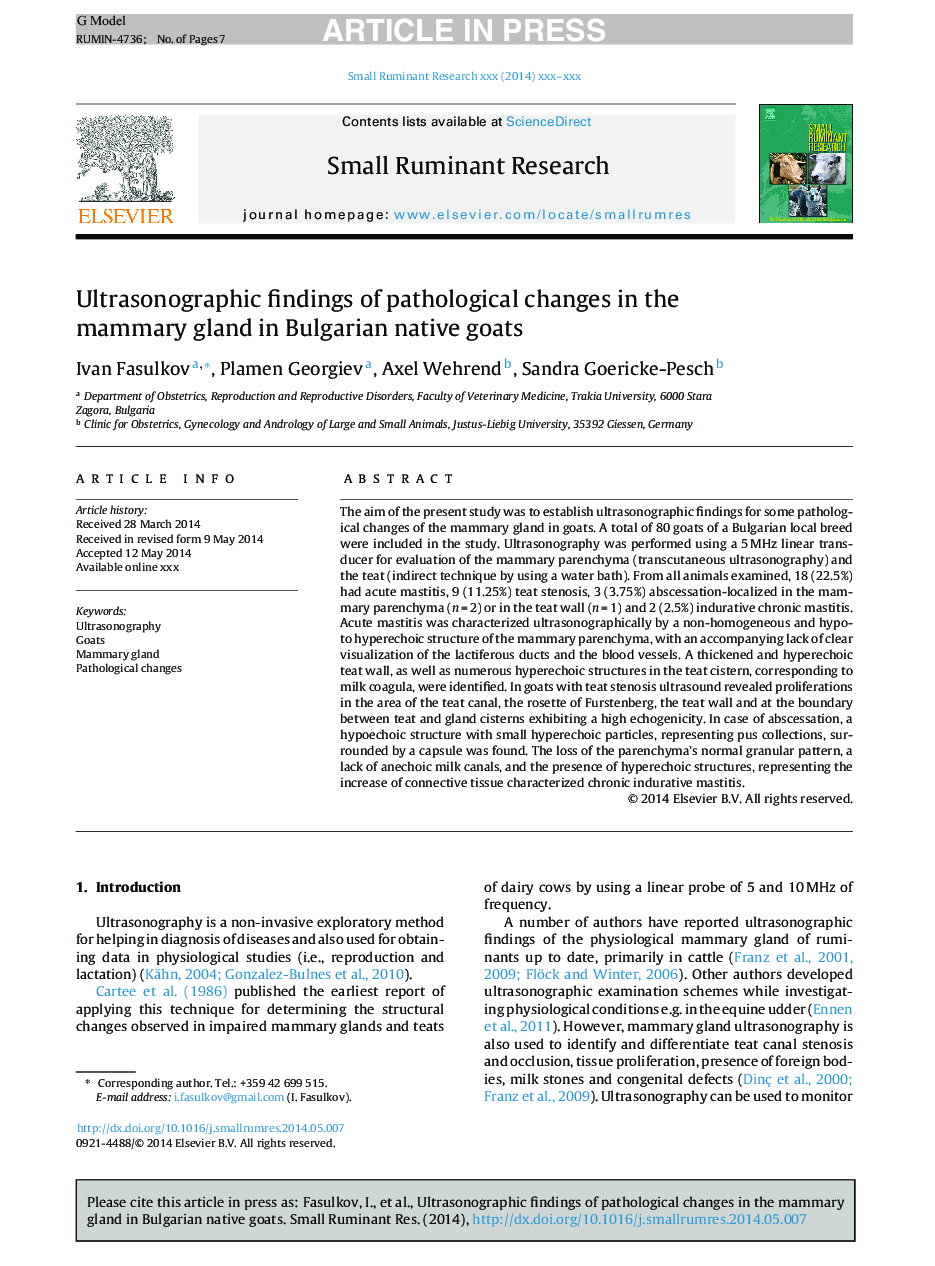| Article ID | Journal | Published Year | Pages | File Type |
|---|---|---|---|---|
| 5795667 | Small Ruminant Research | 2014 | 7 Pages |
Abstract
The aim of the present study was to establish ultrasonographic findings for some pathological changes of the mammary gland in goats. A total of 80 goats of a Bulgarian local breed were included in the study. Ultrasonography was performed using a 5 MHz linear transducer for evaluation of the mammary parenchyma (transcutaneous ultrasonography) and the teat (indirect technique by using a water bath). From all animals examined, 18 (22.5%) had acute mastitis, 9 (11.25%) teat stenosis, 3 (3.75%) abscessation-localized in the mammary parenchyma (n = 2) or in the teat wall (n = 1) and 2 (2.5%) indurative chronic mastitis. Acute mastitis was characterized ultrasonographically by a non-homogeneous and hypo- to hyperechoic structure of the mammary parenchyma, with an accompanying lack of clear visualization of the lactiferous ducts and the blood vessels. A thickened and hyperechoic teat wall, as well as numerous hyperechoic structures in the teat cistern, corresponding to milk coagula, were identified. In goats with teat stenosis ultrasound revealed proliferations in the area of the teat canal, the rosette of Furstenberg, the teat wall and at the boundary between teat and gland cisterns exhibiting a high echogenicity. In case of abscessation, a hypoechoic structure with small hyperechoic particles, representing pus collections, surrounded by a capsule was found. The loss of the parenchyma's normal granular pattern, a lack of anechoic milk canals, and the presence of hyperechoic structures, representing the increase of connective tissue characterized chronic indurative mastitis.
Related Topics
Life Sciences
Agricultural and Biological Sciences
Animal Science and Zoology
Authors
Ivan Fasulkov, Plamen Georgiev, Axel Wehrend, Sandra Goericke-Pesch,
